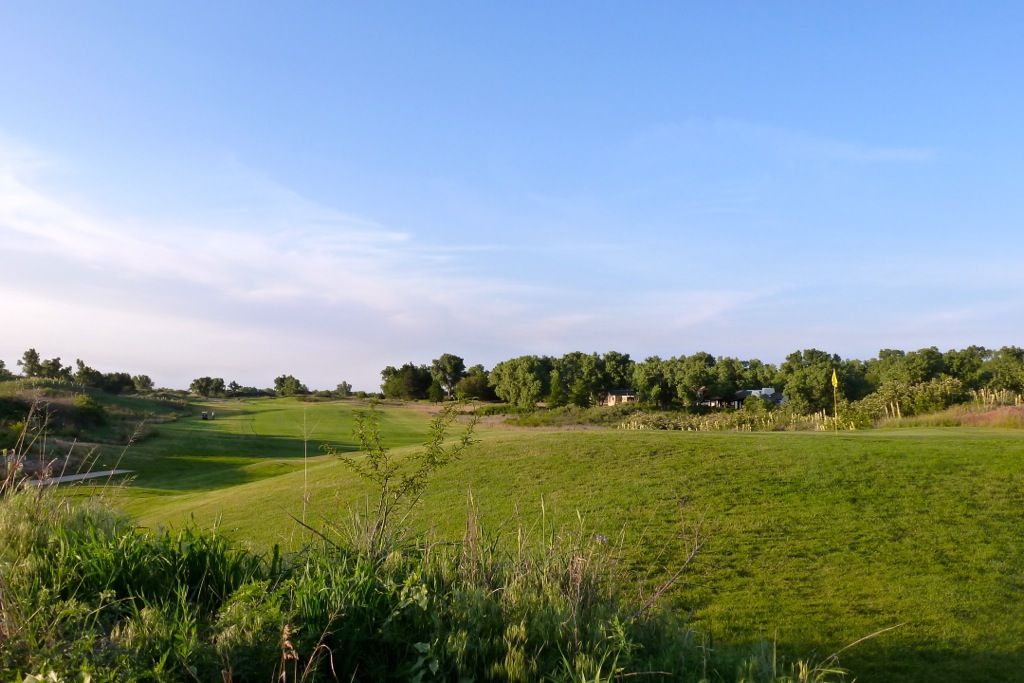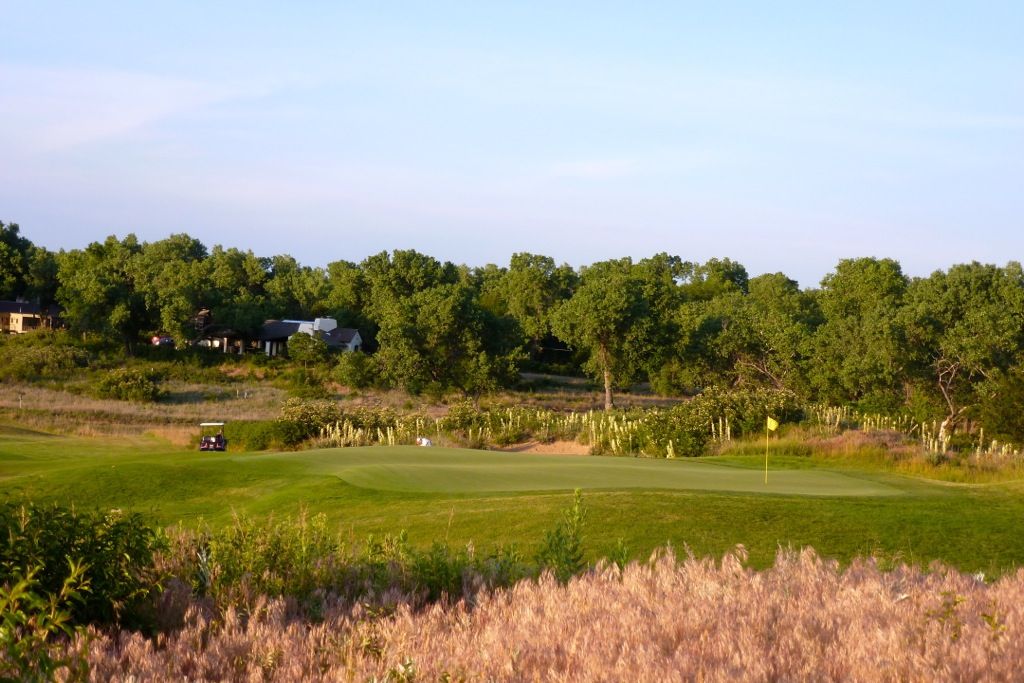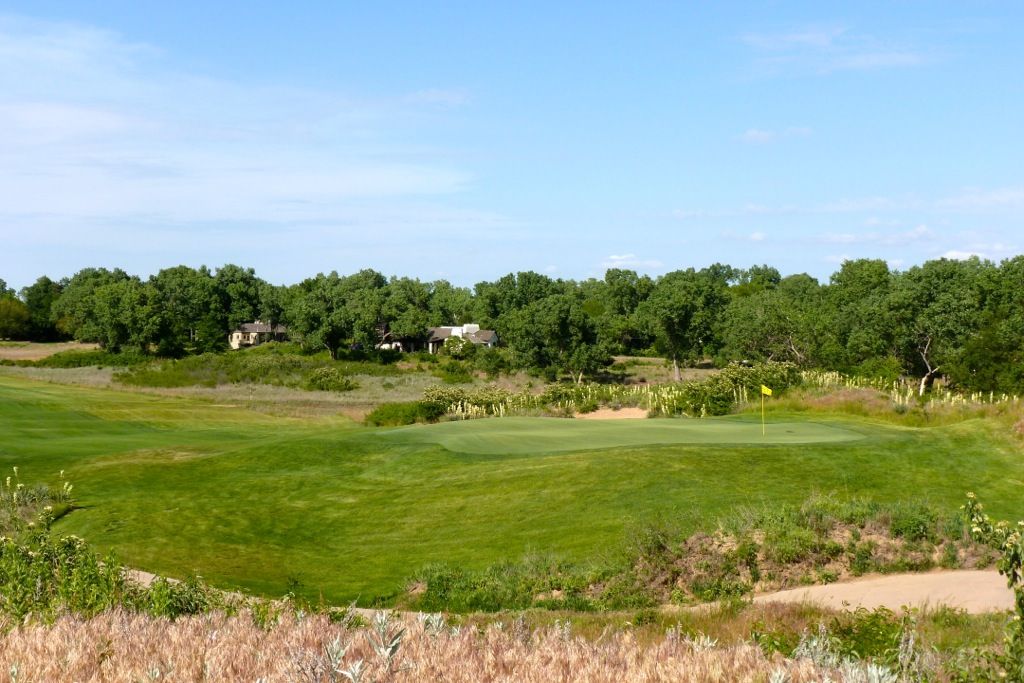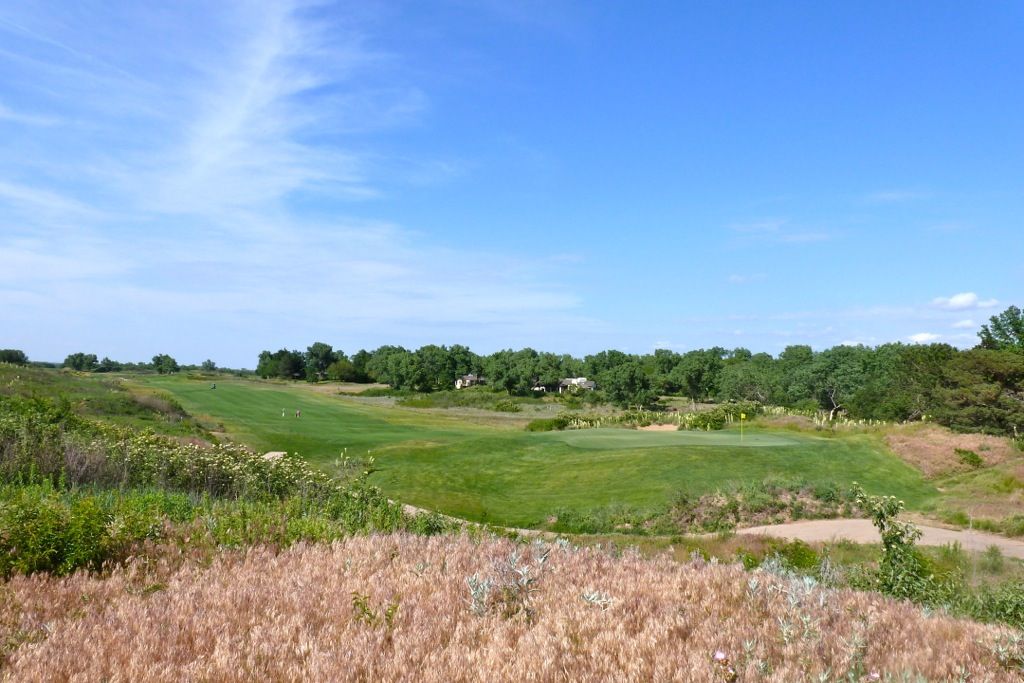Hole 17: Par 5, 500 YardsPlaying into the wind (as the 17th usually does) the golfer plays to the widest portion of the fairway. Downwind, however, the tee shot is played to an ever-narrowing fairway.

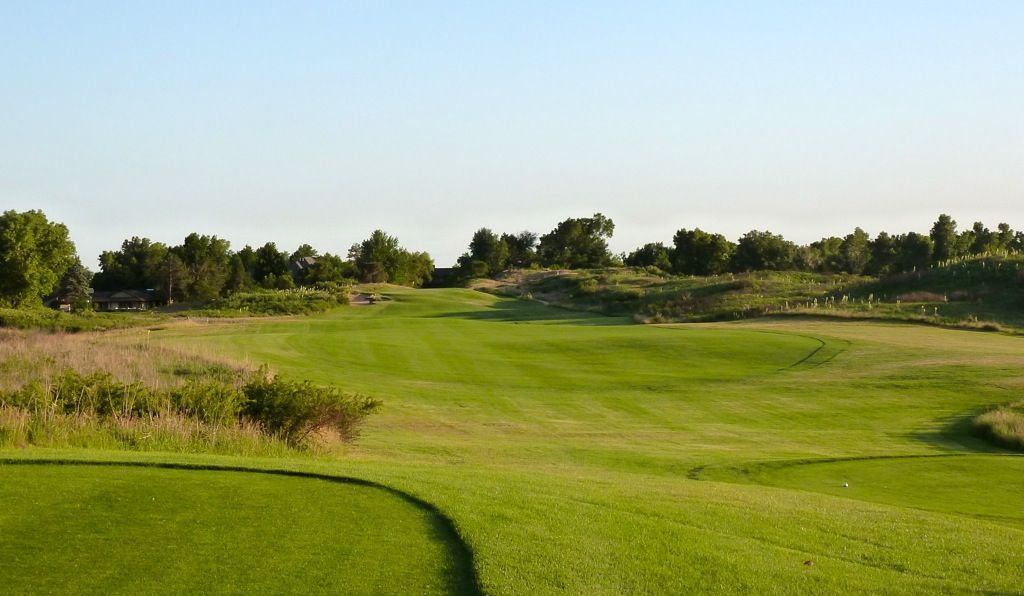
The original 17th tee (then the 8th hole) was located somewhere near the new 11th tees. The tee shot was played from a diagonal to the fairway, and, in my opinion, was a more interesting tee shot than the current iteration. The original tee shot would have looked something like this:

Another rolling fairway at the 17th...
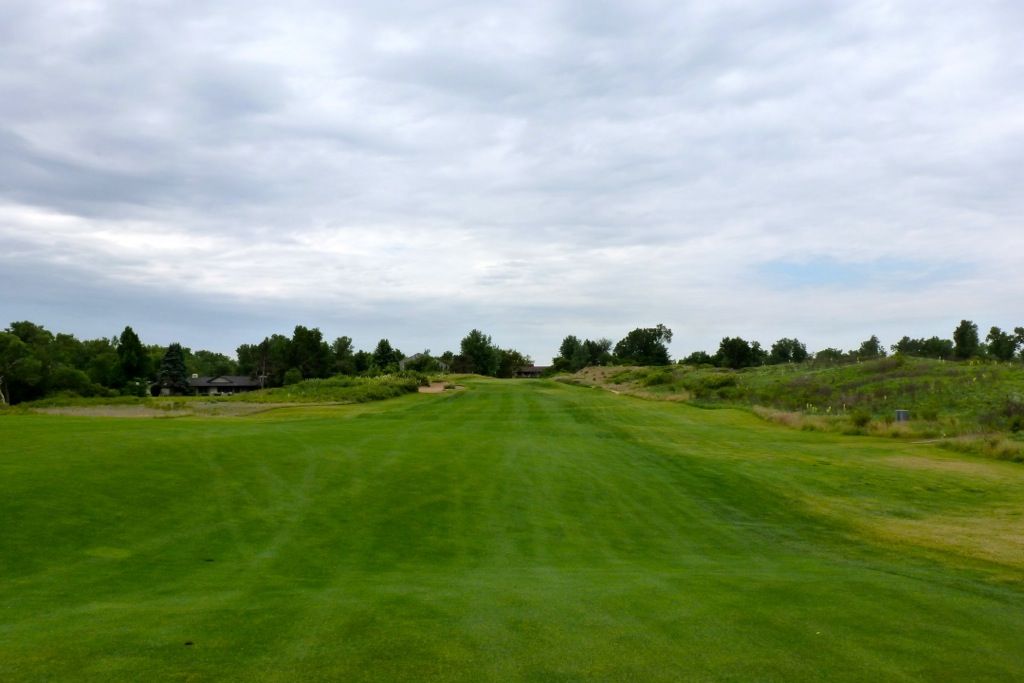
There is no water, no out-of-bounds and only a single bunker, but this is one of the most well-protected greens I have ever seen. As a result, few golfers choose to challenge this green in two, preferring to lay-up and leave a simple (or not) wedge to the green.

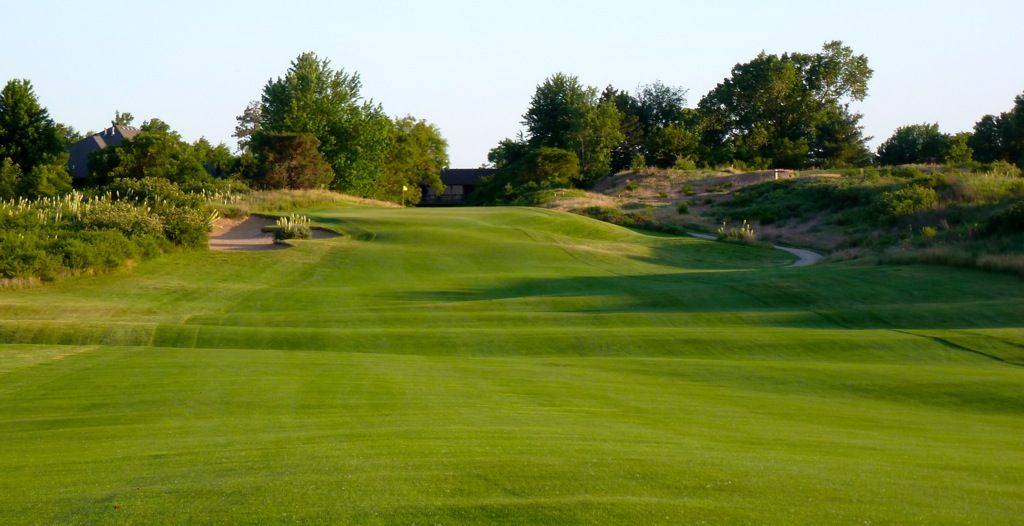
The ideal lay-up in the right side of the fairway leaves a daunting approach over a very deep gully to the right of the green. Though the ideal approach would appear to be from the left side of the fairway, the tilt of the green from back-left to front-right makes approaching from the right preferred.
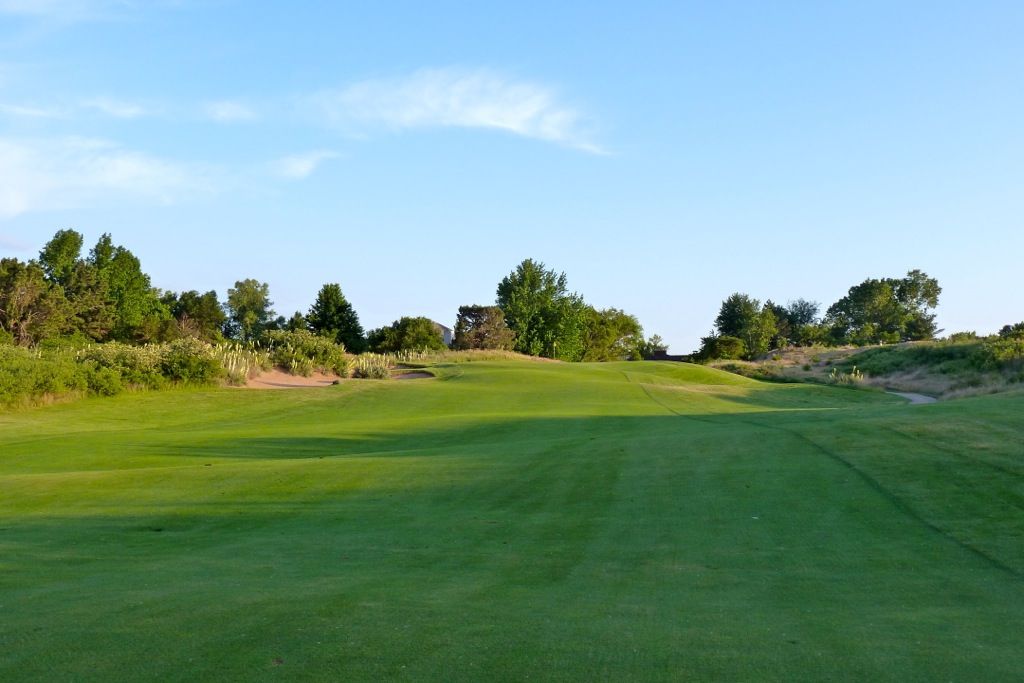

This approach from the left is more visually appealing but in practice is a more difficult shot.
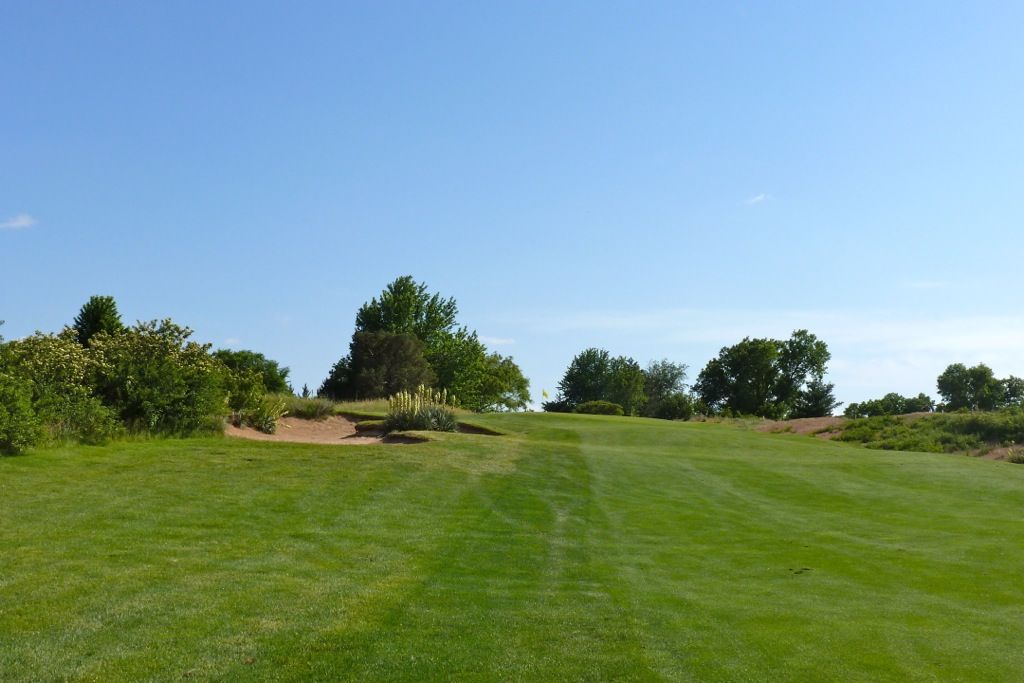
This fortunate golfer (ok, it was me) has ignored his hosts' suggestion to lay-up and has found a tiny sliver of rough short of the green. A relatively simple chip from here.
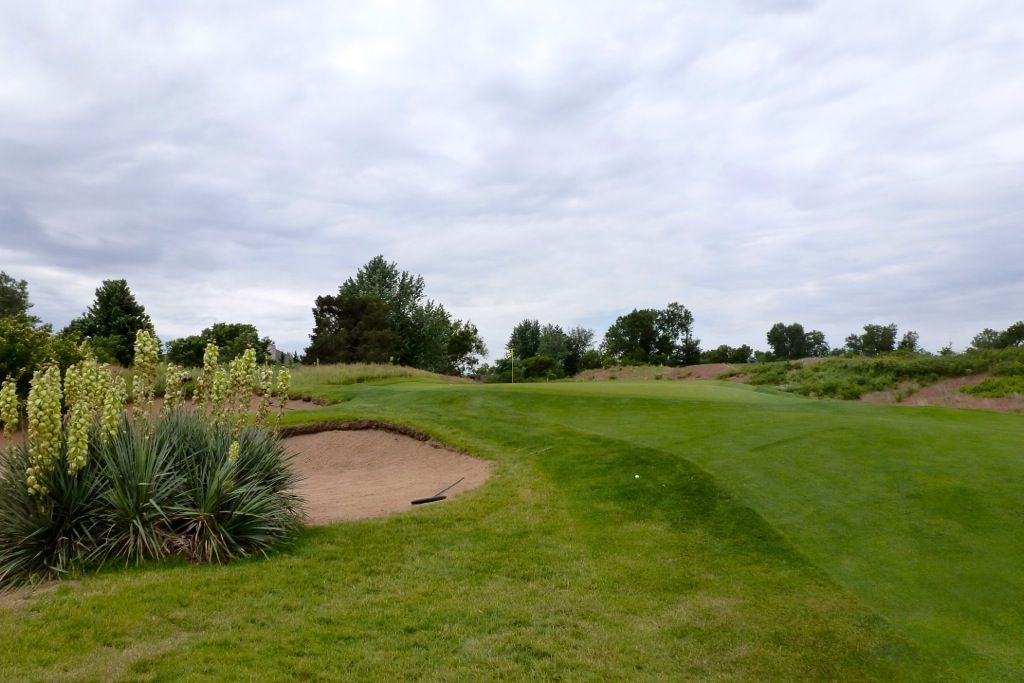
The area right of the green:
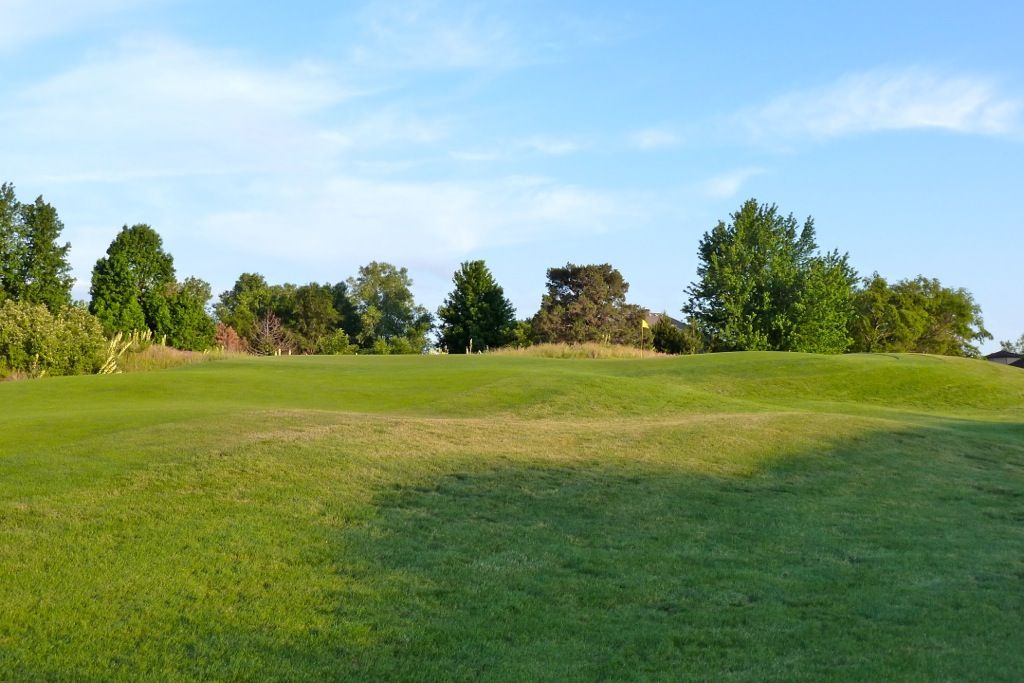
The 17th green is one of the smallest on the golf course, and because of the rounded perimeter contouring, the green feels even smaller. Shots landing near the front or right edges of the green are not long-destined to remain on the putting surface.
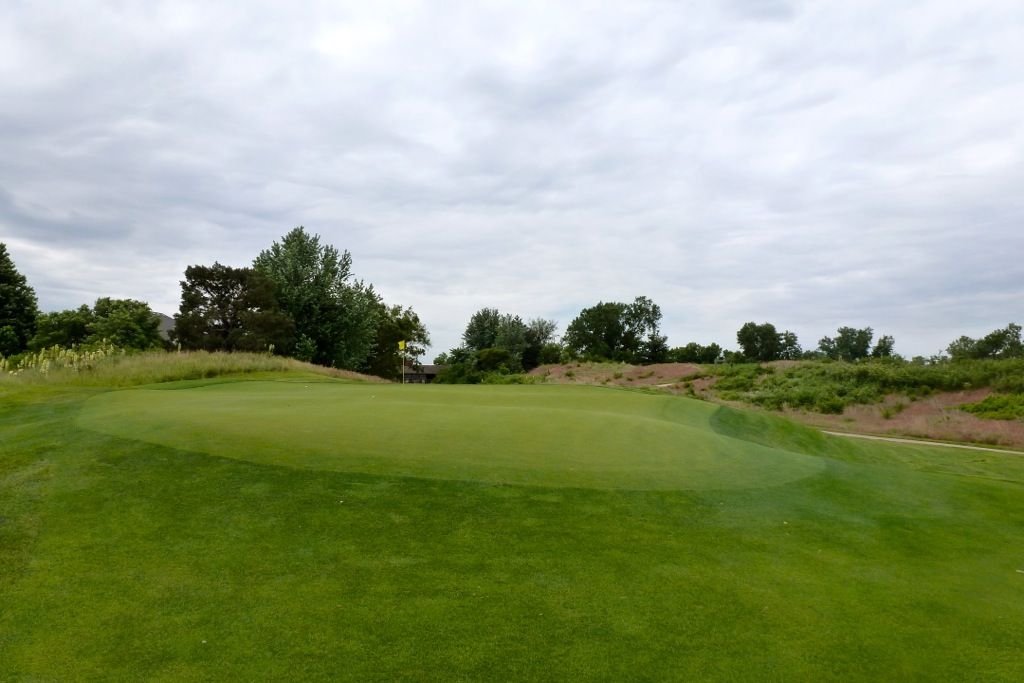
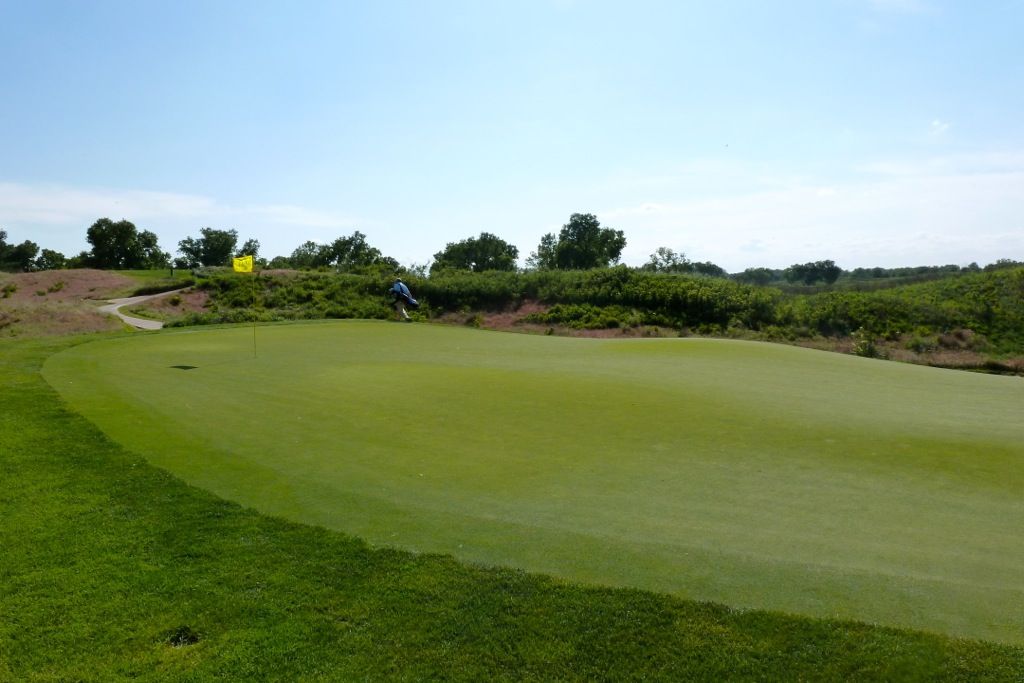
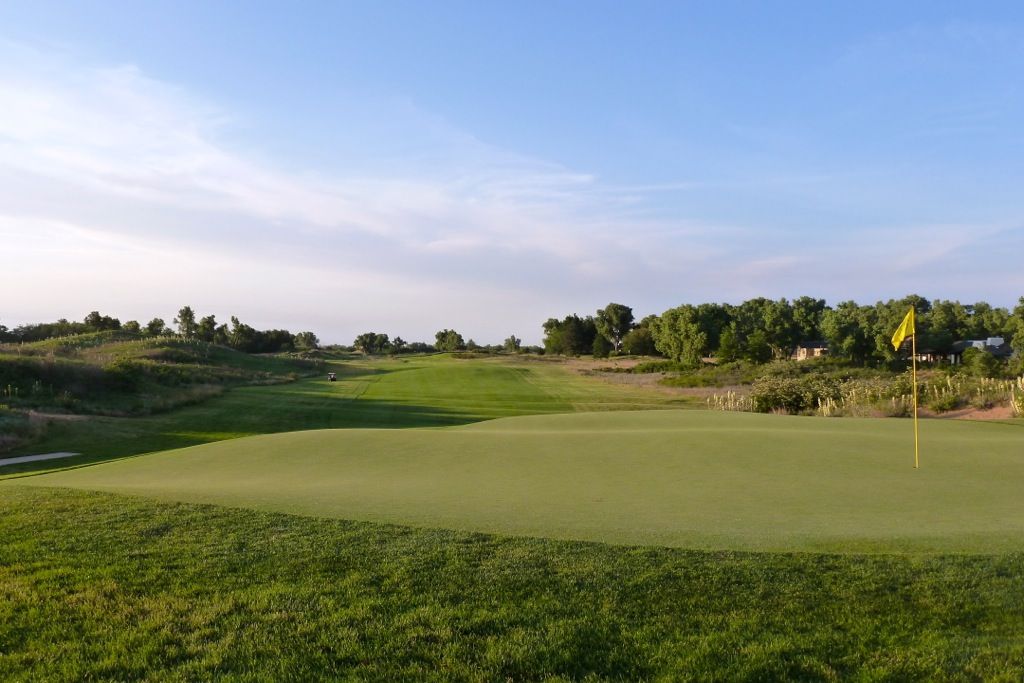
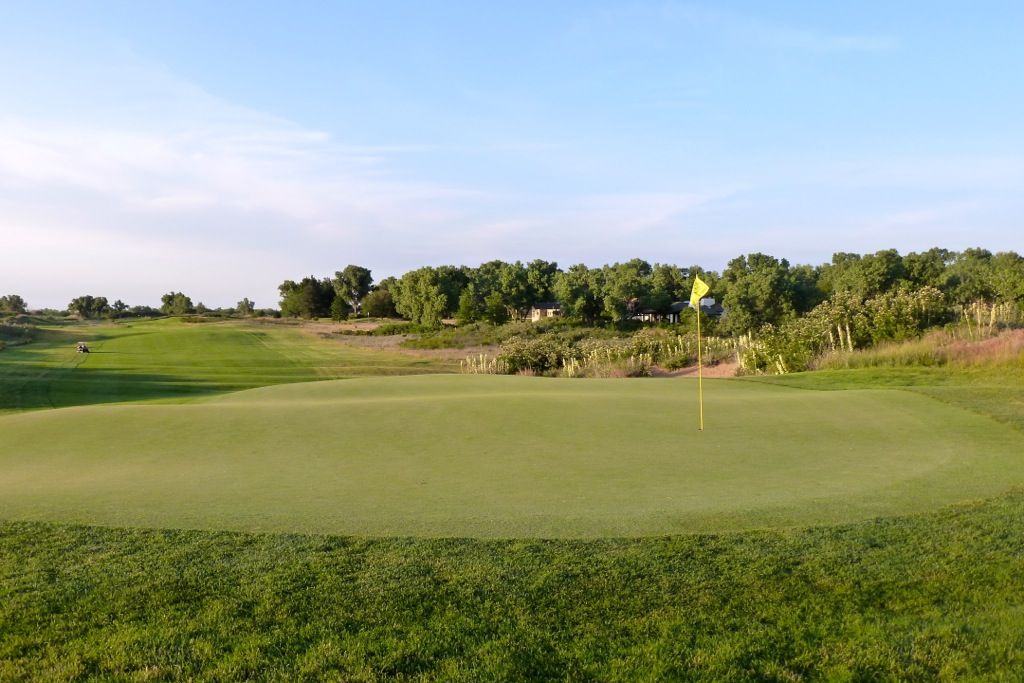

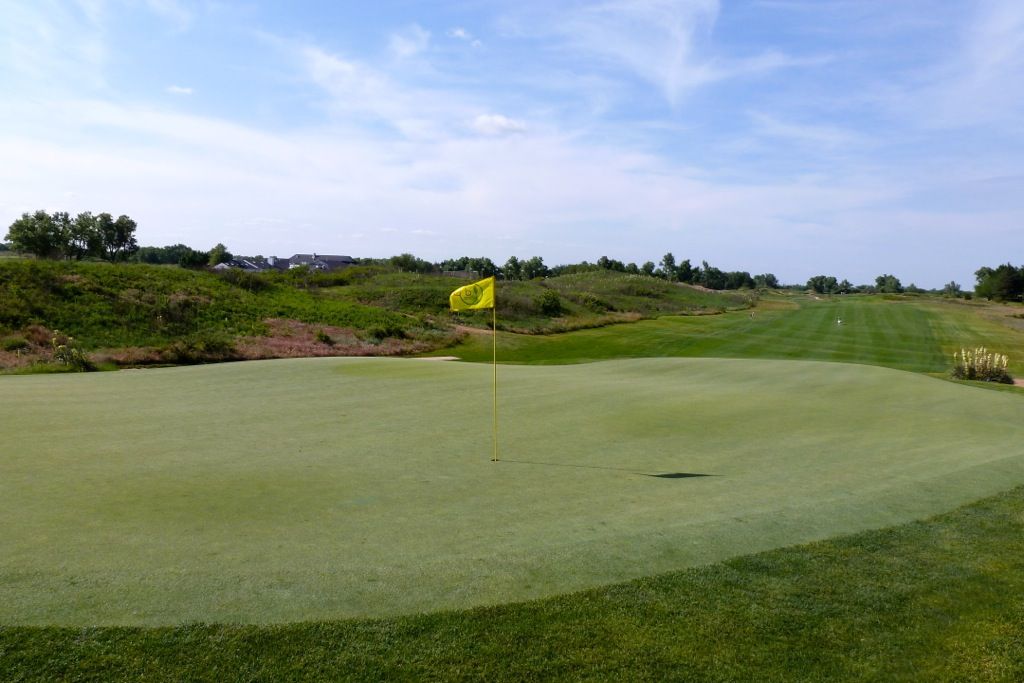
Missing long or right is no picnic either. A wonderful green and green site; certainly of a greater quality than any of the Press greens.
